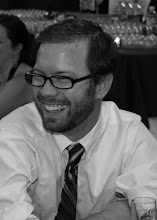
"I'm a knight in shining armchair..." ~ Paul Westerberg
From a Jack to a King










The Capitol, outside the Denver Post, and an Inner City Sasquatch.



The view from work. The Library and Art Museum overlooking Civic Center, Civic Center sans drug dealers, and the the State House.

The sun peaked out just before setting. And I biffed pretty major on my walk home.







For some reason, walking through a maternity ward in a 35 pound "empathy suit" that simulates pregnancy makes my truly pregnant wife a little uneasy.
Me? I had a fun experience last night at baby class, when I donned the suit for 45 minutes as we toured the maternity ward. It provided the tiniest sliver of insight as to what my wife is going through.
Without assuming what my wife is going through I noticed the following:
It is difficult to stand in one position for more than 20 or 30 seconds. I was constantly shifting my feet or leaning against walls, furniture or doorways.
Once one sits down, one does not so easily stand back up.
It is odd to look down and find breasts where one has never found breasts before.
For entirely different reasons, I understand a bit of the self-consciousness pregnant women experience; they are truly not in their own bodies. Nor was I, the bearded man with breasts and a pregnant belly in a denim smock as I walked the halls of the maternity ward.
The other men in our baby class seemed a bit uncomfortable around me. The other expecting mothers were more open to asking me questions and asking how I felt (and letting me know they wanted to see their husbands in the suit) than their husbands. Don't get me wrong, these are all good guys, but there was something about a bearded man with breasts and a pregnant belly in a denim smock that took them a while to warm up to. Towards the end of the tour they were joking with me and asking me questions. I am curious to see if any of them don the suit next week.
There's something about your bearded husband with breasts and a pregnant belly in a denim smock that makes a wife uncomfortable.
A five pound weight on one's bladder, even an empty bladder, is an uncomfortable position to be in.
Special thanks to my wife for being a good sport!

THIS CARD -
FOUND - 8-9-06- DENVER -
INSIDE A LOVE SUPREME - THE
BOOK;
BY A PERSONAL FRIEND OF SR. JOHN COLTRANE;
WHO HAS-TOO VISITED
AMSTERDAM A.F. HAUS c. 1969
THIS CARD: FWD: AS A PEACE MISSIVE -ON-
EARTH
Only after reading the card did I recall that I had last seen it while reading a library book on John Coltrane. I've always said that in a library nothing is ever truly lost, just misplaced sometimes.
The Hitlist:
Holland 1945 – Neutral Milk Hotel
Acknowledgement – John Coltrane
Bureai Of Yards And Docks – Everything Absent or Distorted
Fiction – The Lucksmiths (Oh why would I lie to you?)

